The dramatic evolution of the one-day century: from Boom Boom to AB, and the final frontier
FROM the little-known Dennis Amiss to Sanath Jayasuriya and Shahid Afridi’s mid-90s revolution, here is the rapid evolution of the ODI century — and the final frontier one master blaster thinks will be next to fall.
Cricket
Don't miss out on the headlines from Cricket. Followed categories will be added to My News.
WHEN Dennis Amiss became the first man to reach three figures in one-day international cricket, from 130 balls, no one in attendance at Old Trafford would’ve thought it possible to achieve the feat 100 balls faster.
But that’s exactly what Australian legend Matt Hayden believes will happen, as the world’s most electric batsmen continue to break new ground in the race to be history’s quickest one-day centurion.
Ever since Englishman Amiss raised his bat for the first time in ODI cricket — in just the second one-day international, in 1972 — the competition to be the fastest has been fierce.

MORE NEWS
‘LET THEM PLAY’: Relentless push to have bans lifted
SAVAGE: England great unloads on Aussie ‘cringeworthy bulls**t’
The subsequent decades have seen rule changes, equipment advancements, bigger and stronger players in a fully professional environment and the introduction of Twenty20 cricket — all of which have contributed to an acceleration of runscoring in all forms of the game.
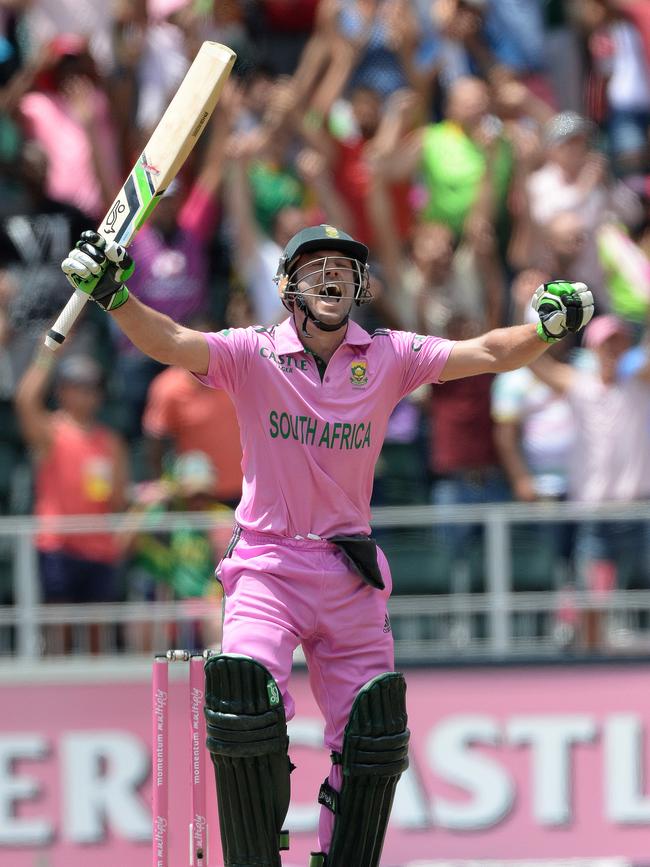
And with South Africa’s AB de Villiers crunching an extraordinary 31-ball ton against the West Indies in Johannesburg three years ago — a scintillating innings which included 16 sixes and nine fours — the next marker is the magical 30-ball barrier.
“Yep, it’s possible,” Hayden told The Daily Telegraph when asked if we could soon witness a player reach three figures inside 30 balls.
“It’s probable, I would’ve thought. There’s no question.
“I’ve seen things in the last eight years or more that have left me speechless.
“It’s been 11 years of (the Indian Premier League) and I’ve been a broadcaster for eight of those years, and I’ve seen things I didn’t think were possible on a cricket field.”
MORE NEWS
CRADDOCK: Apathetic Aussies show how little they care
PROVEN WINNER: Gilly’s keys to Aussie World Cup defence
Hayden is talking about events like KL Rahul’s mind-boggling 14-ball half-century for Kings XI Punjab against the Delhi Daredevils — a staggering knock that remains the fastest half-century in IPL history.
You can only imagine what the good folk at Old Trafford in 1972 would’ve thought about that sort of hitting.
“You’ve just never seen anything that’s hit cleaner in your whole life,” Hayden adds.
”And yet he’s a relatively orthodox player.”
Listen to the latest Cricket Unfiltered podcast as Menners, Barto and Tommy run through the good, the bad and the ugly of Australia’s Test series debacle against Pakistan.
THE TIMELINE
In the early days, as you can expect, the record was broken frequently — with Amiss himself shaving more than a dozen deliveries off his previous best effort when he smacked a 121-ball ton against New Zealand nearly a year later.
West Indian opener Roy Fredericks and New Zealand’s Ken Wadsworth, who broke the 100-ball barrier, each held the record briefly before Pakistan’s Majid Khan took a major leap with an 88-ball effort against England in Nottingham in a knock featuring 16 fours and a six.
The great Clive Lloyd then battered Australia’s bowlers around Lord’s in the 1975 World Cup final, finishing on a sizzling 102 from 85 balls to hold the record for seven mighty years.
Seven years later, Pakistan’s Zaheer Abbas captured the attention of the cricketing world when he snatched the title with a century from 72 balls.
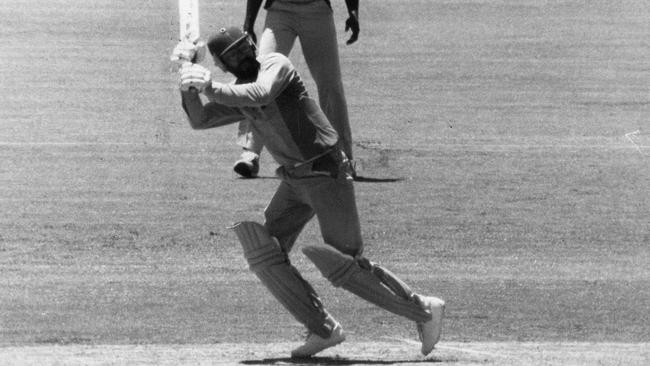
In 1983, the 60-over format was finally scrapped forever — after years of tinkering with 35, 40, 50 and 60-over games — with officials settling on 50 as the magic number, once again changing how teams had to attack, set their innings up and still find time to score enough runs to defend.
In subsequent years fans were treated to the free-swinging efforts of the original masterblaster, Viv Richards’ 149-run, 99-ball smash-up of India and Kapil Dev’s unbeaten 175 from 138 balls for India against Zimbabwe.
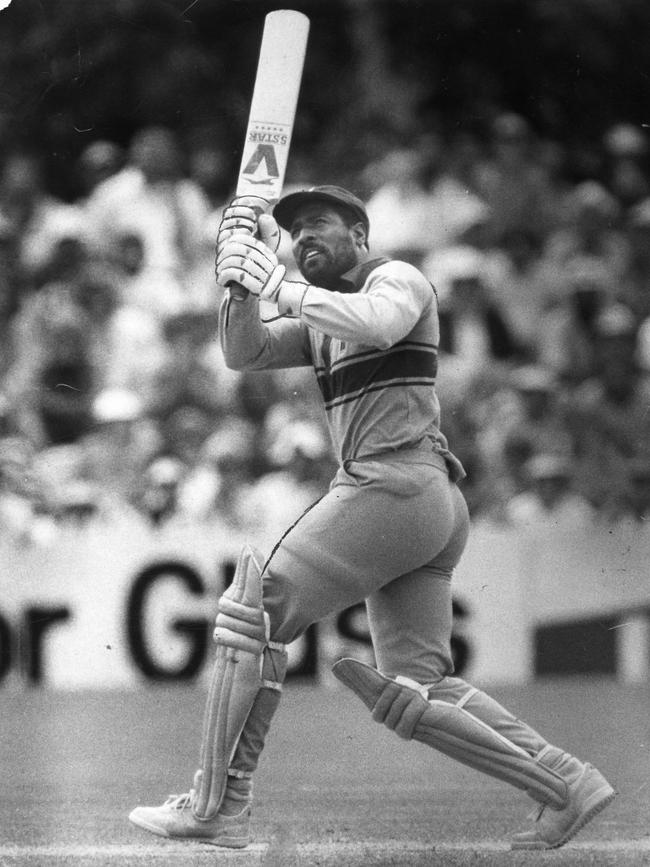
But the next big jump came in 1988, when Mohammad Azharuddin cut the record to 62 balls against New Zealand.
He held the crown for eight long years before the mid-1990s saw an explosion of attacking batting which changed one-day cricket forever.
Fielding restrictions were introduced — and powerplays — and by 1992 only two fieldsmen were allowed outside the circle in the first 15 overs.
No longer was it acceptable to feel your way into an innings. Runs were there to be taken in the opening overs — and leading the revolution was Sri Lanka’s Sanath Jayasuria.
Jayasuria, along with opening partner Romesh Kaluwitharana, led Sri Lanka to a stunning World Cup victory at the 1996 World Cup — but not before Jayasuria had already shown his cards, with a seemingly impossible 48-ball ton against Pakistan in the Singer Cup in Singapore in April 1996.
“They were really the cutting edge for what set up my thinking,” Hayden said of Jayasuria and Kaluwitharana.
“If Kalu batted for more than 10 overs, it was shut the gate. The game was done.
“At that stage I was only beginning to explore the parameters of my power game and the effectiveness of that game, whereas Kalu and Sanath were exploring that.
“(Opening partner Adam Gilchrist) and I took it to the next level and now there are players, like (India’s Virat) Kohli and AB, who are again exploring new heights again.”

Incredibly, Jayasuria’s mark stood for barely six months before Pakistan’s Shahid Afridi burst onto the scene in just his second ODI — a ridiculous 37-ball effort which ensured he held the record for a staggering 17 years.
So brutal was Afridi’s knock that even with various advancements in batting over the years — such as shortening boundaries around the world by bringing the rope in, developments in bat size and quality, and powerplays — his mark was not bettered until Corey Anderson smoked a 35-ball screamer for New Zealand against the West Indies in 2014.
And then that barely lasted 12 months before de Villiers ripped the Windies’ attack to pieces in Jo’berg.
Perhaps the biggest difference made in that time was the introduction of two new balls in each ODI, a change brought in in 2011.
It was intended to assist bowlers — with the new ball typically offering more swing and bounce, and therefore making it easier to create wicket-taking opportunities — but instead resulted in batsmen being able to score more quickly, for longer.
The ball no longer deteriorates quickly enough to generate reverse swing and batsmen find it easier to score runs late in their innings.
“Strategically, in my day, you more or less gave up trying to hit the soap ball,” Hayden explains.
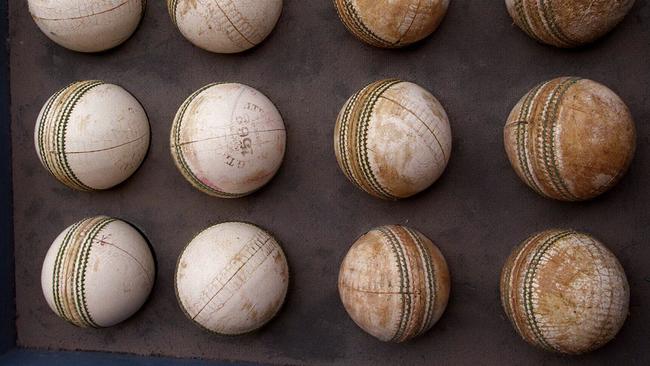
It is changes like that — and the expansion of T20 cricket around the world, which has honed the power-hitting of the world’s top batsmen and opened up their scoring range, as shots like the ramp and switch hits become more accepted — which led to Anderson’s stunner, and the de Villiers’ whirlwind which followed.
Hayden credits T20 cricket with having a considerable impact on how modern batsmen play aggressively — and with confidence.
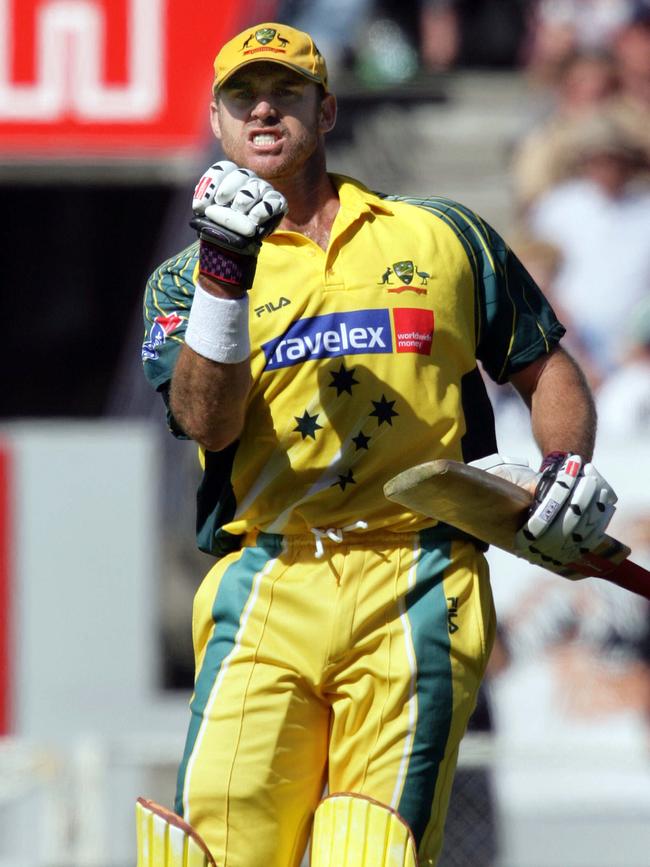
“T20 cricket has had a major influence on batting styles. Batting quick is like a drug,” Hayden says.
“It’s something which I really felt towards the latter part of my career when it came back to the longer formats of the game as well, where I felt it really hard to claw back gears.
“A lot of that is just around the drug of being able to score.
“When I first started it was very much around wearing opposition sides down and then scoring — and then my era, and maybe even led by me, was about annihilating an opposition upfront and that being the quickest way to wear them down.
“It was a bit like taking a gun to a knifefight — who is going to win?”
In the modern day, England has taken aggressive hitting to another level. You need look no further than their astonishing record demolition of Australia in June — when they looked set for history’s first 500+ score.
They fell just short — winding up on 6-481 — but it was a special reminder of what is required in the modern game. Power above all else.
One thing is absolutely clear: the game is unrecognisable from that which Amiss starred in when he raised the bat for the format’s first century.
THE AUSTRALIANS
Glenn Maxwell holds the record for the fastest century scored by an Australian, with his 51-ball showing against Sri Lanka at the SCG in 2015 standing tall among some sizzling efforts from his countrymen.
He took the mantle from James Faulkner’s absurd 57-ball effort in a truly nutty game in Bangalore in 2013, while Gilchrist (67) and Hayden’s best (66, against South Africa in the 2007 World Cup) were destructive in their own ways.
Hayden says his 66-ball effort was months in the making — and was almost borne out of a feisty argument with then coach John Buchanan.
TEST YOUR KNOWLEDGE WITH OUR ONE-DAY CRICKET SUPER QUIZ
The pair had a heart-to-heart conversation during Australia’s limited overs tour of New Zealand in the lead-up to the World Cup, and Buchanan revealed he no longer had Hayden in his first choice team.
“We’re not getting enough out of you,” Buchanan told Hayden, who had endured a lean summer as he privately worked on a power cut shot — a secret weapon he hoped would deliver huge dividends at the World Cup.
“You’re not batting deep enough or long enough and we just feel in order to get competitive scores of 350 plus, which is what we kind of think the West Indies will be about, we need more.”

Hayden firmly disagreed and argued that the team was best served by he and Gilchrist charging out of the blocks.
“That’s bullshit, Buck,” Hayden fired back.
“The fact is I feel right now our key strength is in Gilchrist-Hayden partnership because the game can be done, dusted and delivered in 12 overs.”
Buchanan relented, and Hayden retained his spot and smashed a then-Australian record 181.
A month later, Hayden hammered his 66-ball ton as Australia crushed Group A rivals South Africa by 83 runs.
“I knew that in the World Cup players would bowl wide of off stump to me (but) I didn’t show that necessarily in a game of cricket in the one-day series against New Zealand,” he said
“(Against South Africa) Shaun Pollock did exactly that — he bowled a foot and a half outside the off stump for the first couple of balls.
“His third or fourth ball I slapped him through cover point and he’s going ‘holy shit where do I bowl now?’ and he did not want to bowl to me.
“And the rest of the time he bowled at me because he panicked and he got smashed.”
Every ODI and T20I ad-break free during play only on FOX CRICKET this November. Get Sport HD + Entertainment with no lock in contract and no iQ4 set up costs. Get Foxtel Sport. T&C’s Apply
Originally published as The dramatic evolution of the one-day century: from Boom Boom to AB, and the final frontier


